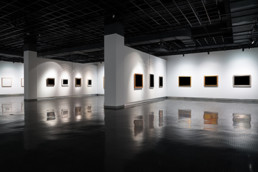How Does Lighting Affect a Museum’s Artwork?
Over time paintings exposed to light can result in gradual yet permanent damage. This gradual damage is caused by the paint and frames of paintings absorbing light over time, a process known as photochemical deterioration. Unfortunately, the most destructive form of light is invisible to the naked eye. Both UV or ultraviolet energy and IR or infrared energy are not visible to human vision, but the effects can be very damaging to works of art, some of which are several centuries old. UV rays have short wavelengths and lead to photochemical destruction often manifested as fading. Infrared rays have a longer wavelength, which is a common source of radiant destruction. Typical damage occurs from radiant heat causing a rise in temperature. This forms a reaction on the surface of an object such as cracking, lifting and color changing in the paint used to create the works of art we enjoy on museum walls.
One method to lessen the severity of light damage is with accurate measurements of light and its components. This can determine how much illuminance (visible light) and potential damage a work of art will receive. Once the current intensity and make-up of the visible light is known, the lighting may be reduced or altered to slow the rate of photochemical deterioration. Other methods to help preserve and slow UV and IR damage is through the use of filters, moving the lights further back and by limiting the time an object is exposed.
A new way to display artworks while protecting them and lessening the effects of UV and IR is to use LED lights. However, while LED lights do not harm the paintings, the light they produce is not the same as a halogen or tungsten based lamp and detracts from the ambiance the museum wants. As a result, special metals must be used to absorb the original light and produce something slightly different. Engineers have already succeeded in creating unique bulbs that make the same light as before, only harmless to the art.
For any concerned curators, Konica Minolta Sensing has the technology to help. Our T-10A, CL-70F and CL-500A illuminance and irradiance meters can accurately read the light levels of LEDs to make sure the art pieces are in optimal lighting. They are great for small areas, can measure a variety of light types, and are accurate portable devices.
Additional Recommended products:
Original Post: September 4, 2014
Updated: June 6, 2016










